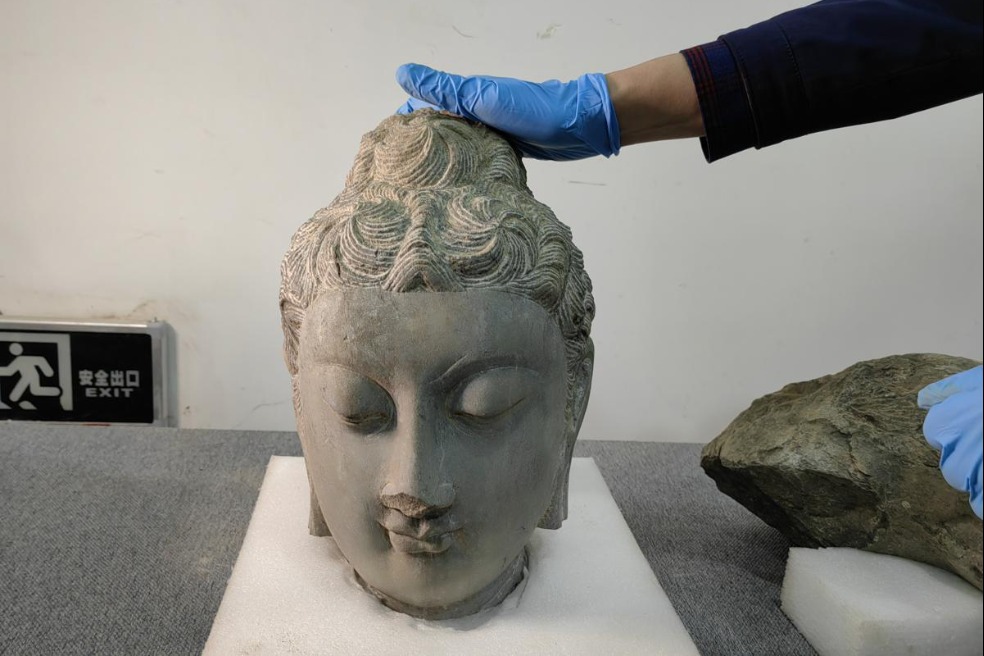Alternative meat can sustain food systems
By Shenggen Fan | chinadaily.com.cn | Updated: 2019-11-22 12:29

Pork prices in China have increased significantly of late thanks to an African swine fever outbreak which killed or forced the authorities to cull millions of pigs. National Bureau of Statistics data show that prices of pork jumped 20.1 percent month-on-month in October. Rising for nearly a year, the price of pork peaked in late October at 53.79 yuan per kilogram, up 188 percent year-on-year. Since then prices have fallen sharply following reports of fresh disease outbreaks.
In 2019, China's total pig stock has fallen 41 percent year-on-year, which means a loss of about 200 million pigs. As officials continue efforts to control the effects of the African swine fever outbreak, consumers feel the impact of fluctuating pork prices and erratic supply. The China-US trade has also played a role in rising meat prices in general.
A chance to reduce pork consumption
Along with its commitment to combat climate change, the fluctuating pork prices, dwindling pork stock and the developing alternative meat industry have given China a great opportunity to reduce, perhaps halve, its meat consumption and thus reduce its greenhouse gas emissions. After all, livestock account for more than 14 percent of the total global greenhouse gas emissions.
To help ensure healthy and sustainable food systems, an EAT-Lancet Commission report has called for global transformations, including halving over-consumption of foods such as added sugar and red meat, primarily to reduce excessive consumption in wealthier countries.
Alternative meat — both cultured meat, which is lab-grown using animal cells, and plant-based meat — can play a role in reducing greenhouse gas emissions from livestock and decreasing health risks associated with excessive meat consumption. Despite a wide range of estimates, studies show greater sustainability in producing alternative meat compared with real meat.
Cultured meat uses 7-45 percent less energy (with the exception of poultry), 99 percent less land, 82-96 percent less water (depending on the product compared), and emits 78-96 percent less greenhouse gases.
Alternative meat causes less environmental harm
Both cultured meat and plant-based meat have the potential to substantially lower the environmental impact of meat production through reduced greenhouse gas emissions and land use. Experiments and practices in China have show cultured meat production emits less greenhouse gases than real meat production, although it requires slightly higher direct energy use.
This year has seen tremendous growth of the alternative meat industry led by plant-based meat alternatives, particularly in the United States. Impossible Foods and Beyond meat have announced partnerships with restaurants and franchises, and their products have become more widely available in groceries and supermarkets.
Cultured meat, too, continues to make progress. Motif Ingredients has announced it have attracted $90 million of funding, which is unprecedented for a food technology company.
As for the alternative meat industry in China, it has surged in recent times. Established plant-based food enterprises such as Whole Perfect Food are introducing new products, while new companies such as Zhenmeat and Starfield have emerged. Ham producer Jinzi Ham has announced plans to sell plant-based meat, and MYS Group is conducting research into similar products. This follows a $300 million deal China signed with three Israeli companies — SuperMeat, Future Meat Technologies and Meat the Future — in 2017 to purchase lab-grown meat.
Unique approach to meat substitutes
Yet China's approach to alternative meat is unique. Unlike Impossible Foods or Beyond Meat, many Chinese companies are focusing on local dishes and palates. Also, meat substitutes are not new to China, as is evident from the number of established meat substitute companies mentioned above. China's culinary tradition of meat substitutes, or "mock meat", can be traced back centuries to vegetarianism rooted in Buddhism, which respects all living creatures. And the Chinese market for alternative meat is already the largest in the world, with sales nearing $910 million in 2018 compared with $684 million in the US.
However, alternative meat has to overcome major challenges before becoming a staple in our food system, with one of one of the biggest obstacles being price. The cost of lab-grown meat remains high despite falling dramatically over the past few years. Compared with 2013, when a lab-grown meat burger cost more than $300,000, Memphis Meats said last year that a quarter pound of ground beef cost about $600.
Plant-based meat offers a more immediate solution, even though there is enough room to make it more affordable. Impossible Foods sells 12 ounces (about 340 grams) of plant-based ground meat for $9, while 1 pound (454 grams) of real ground beef costs about $3. Similarly, plant-based beef patties from Jinzi Ham costs about $25 a pound, which is almost triple the price of a pound of real beef. Attractive prices for alternative meat will be a key factor for its success in the Chinese market, especially because prices of traditional meat substitutes, such as soy-based pork belly, are comparable or even cheaper than real meat products in China.
Cultured meat industry has tough task to fulfill
In addition, tastes, too, will need to develop for the cultured meat industry to grow globally. Plant-based meat burgers have evoked a positive response, but whole-muscle cuts like steaks and roasts will be more challenging to duplicate. And going beyond replicating the taste and texture of meat, products will need to suit cultural and personal preferences worldwide. The $300,000 burger in 2013, according to reports, was said to be extremely dry, due to a lack of fatty juices. Which means the cultured meat industry has a harder task to fulfill.
Moving forward, it is important to continue to invest in the alternative meat industry and encourage innovations. Recently, Harvard University scientists reported a method to better replicate the form and flavor of meat by culturing the muscle cells of cows and rabbits on a gelatin scaffold.
Also, the range of products continues to expand, as seen in Wild Type, a start-up to produce cultured salmon. And the cultured meat industry needs to further optimize the production process of its products, in order to meet the volume and pace of growing customer demand.
At the same time, research should continue in order to fill knowledge gaps, and the implications of alternative meat production on the livestock industry, smallholder farmers, and the entire agricultural sector need to be taken into serious consideration. While a decrease in demand for livestock could have negative impacts on farmers and markets, it could also lead to increasing investment and research in meat substitutes such as soy.
Moreover, studies are needed to accurately determine the impact of alternative meat on the environment. Research also needs to be conducted on the implications of alternative meat on nutrition, an area left largely unaddressed until now. And, apart from reduced health risks from lower meat consumption, the nutritional value of alternative meat products and whether they can replace key nutrients present in animal-sourced foods should be thoroughly studied, for example, through clinical trials.
The author is director general of the International Food Policy Research Institute.
























